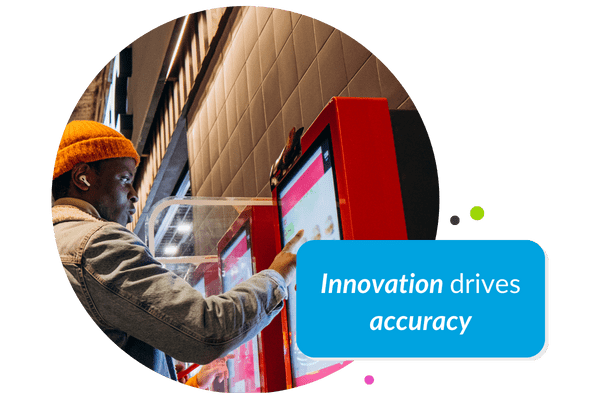Drive-Thru Study 2025
25 Years of Benchmarking QSR Drive-Thru Performance
The 25th Annual Drive-Thru Study captures the transformation of the industry’s most important lane. With data from 13 leading QSR brands, spanning three segments, plus groundbreaking Voice-AI Ordering insights, this year’s report shows how the drive-thru is being reengineered for the next generation of QSRs.
AS FEATURED IN





What's New in This Year's Study?
For the first time, the Drive-Thru Study splits brands into three categories: Classic, Chicken, and Beverage. This lets you see how competitors stack up within their own lanes. And because QSRs everywhere are racing toward automation, we also put Voice-AI Ordering to the test to find out if it is just a shiny novelty or the start of something permanent.
Classic Brands
Burgers, tacos, and timeless QSR staples.
See how the legacy brands of the drive-thru performed on speed, accuracy, and satisfaction, and how they are raising the bar to compete in today’s fast-changing landscape.
Chicken Chains
The fastest-growing category in QSR.
From crispy sandwiches to combo meals, chicken brands are fueling demand like never before while working to balance volume, quality, and friendliness against longer wait times.
Beverage Brands
Coffee, tea, and beyond.
Drink-first drive-thrus thrive on frequency and are redefining what repeat visits look like, shaping customer expectations in ways that set them apart from traditional meal stops.
Voice-AI Ordering
The future of the drive-thru, tested.
With labor shortages and rising wages fueling automation, Voice-AI Ordering is the industry’s boldest experiment. But is it a long term solution or just a spark?
Measuring the Forces Shaping Every Drive-Thru Visit.
Unlike traditional consumer surveys, this study gathers data through real-time, unannounced visits by mystery shoppers. These visits offer an authentic snapshot of the customer experience across 13 QSR brands and help establish an industry benchmark.


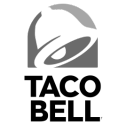






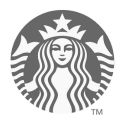



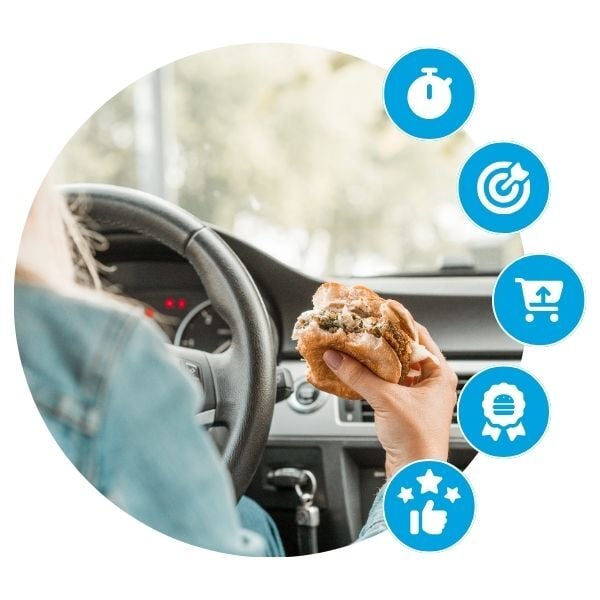
-
Speed of Service
Speed is the heartbeat of the drive-thru and one of the strongest drivers of customer satisfaction. Even small shifts in total service time can change how customers perceive efficiency and shape their overall experience. This metric includes:
- Total time, service time, wait time, window time & time per car
- Average number of cars in line
- Impact of stations
- Year-Over-Year Trends
- Brand-to-brand performance comparisons
- Total time, service time, wait time, window time & time per car
-
Order Accuracy
Accuracy is the cornerstone of customer trust, and mistakes carry more weight than just a missing item. Each error could possibly disrupt the experience, erode confidence, and make customers think twice about returning. This metric includes:
- Breakdown of inaccuracies
- Year-Over-Year Trends
- Brand-to-brand performance comparisons
-
Suggestive Selling
It’s one of the most underused profit levers in the drive-thru. A well-timed upsell can raise check size, add value to the guest experience, and even speed up the flow when done right. In this study, we analyze when and how upsells are offered and the impact they have on both customers and operations. This metric includes:
- Frequency of suggestive selling by brand
- Timing of the upsell during the order
- Impact on service time
- Brand-to-brand performance comparisons
-
Food Quality
The drive-thru is only as good as the food that leaves it. Customers remember meals that arrive at the right temperature, are fresh, and are consistent. They are more likely to return to these brands that deliver on those expectations. This metric highlights how well each brand upholds quality under the pressure of the lane, focusing on:
- Taste and temperature of main items
- Taste and temperature of side items
- Year-over-year trends
- Brand-to-brand performance comparisons
-
Overall Satisfaction
The drive-thru is more than the sum of its parts. Speed, accuracy, and food quality all matter, but satisfaction ultimately comes down to how the entire experience feels. That’s why we paired overall satisfaction with a closer look at friendliness, because a genuine interaction can turn a routine stop into a lasting impression. This metric includes:
- Friendliness influence on other metrics
- Brand-to-brand comparison on satisfaction & friendliness
- Year-over-year trends
-
Voice-AI Ordering
Automation is the newest player in the drive-thru, and this year’s study put it to the test by evaluating what makes automation unique. Here is what we measured:
- Comparison to employee-led ordering using the five core metrics
- Speaker clarity and order comprehension
- Customer sentiment toward AI interactions
- Human intervention requirements
Research Methodology: How we collected the data
With the help of our extensive mystery shopper network, we performed 2,265 mystery shop orders across the U.S.
Mystery Shop Allocation
We conducted 165 mystery shops per brand across 13 U.S. brands, with locations selected for broad geographic coverage. Beyond standard drive-thru evaluations, shoppers also completed 40 visits at 3 brands testing Voice-AI Ordering, totaling 120 AI-enabled orders where an AI assistant replaced the crew member.
Timing
The shopping period spanned from June to July 2025, with orders placed at various times of day (breakfast, lunch, afternoon, and dinner) and days of the week to capture a balanced view of performance in real-world conditions.
Metrics Measured
The study evaluated five key factors that influence consumer choice: Speed of Service, Order Accuracy, Suggestive Selling, Food Quality and Overall Satisfaction.
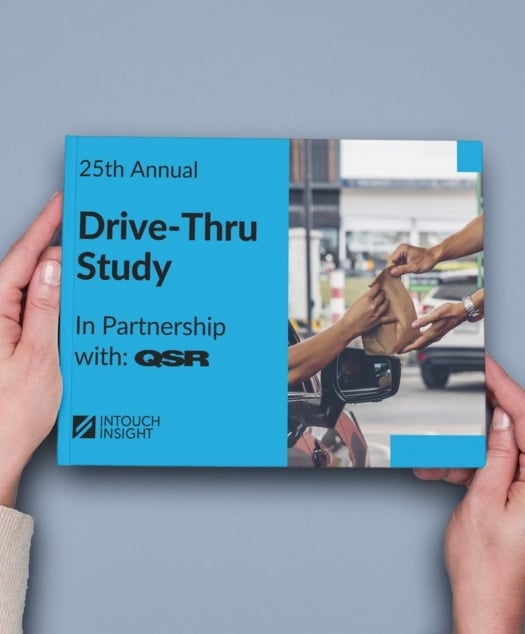
The key takeaways.
The Emerging Experiences study provides valuable data to guide your investment decisions and improve your customers' ordering and pickup experiences.
Tech innovation boosts customer satisfaction
3 out of 4 innovation experiences received higher satisfaction scores compared to their legacy counterparts.

Tech innovation leads to speed improvements for digital orders
Investing in technology has streamlined digital order processing for pickup. Whether customers were picking up their orders in a drive-thru, pickup window, or food locker, the study reveals that these innovations have reduced the time spent picking up.
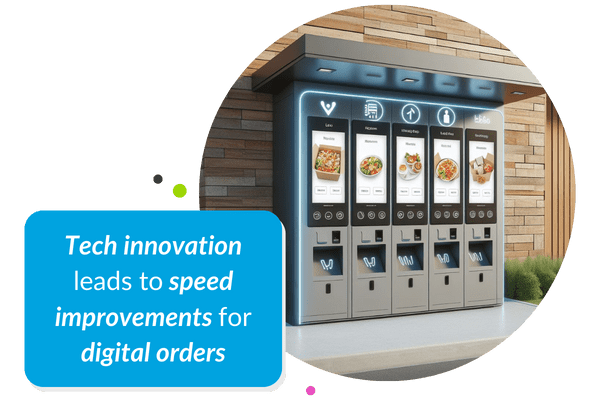
Innovation drives accuracy
The data suggests that the overall order accuracy scores of 3 out of 4 innovation experiences outperformed those of the legacy experiences.
